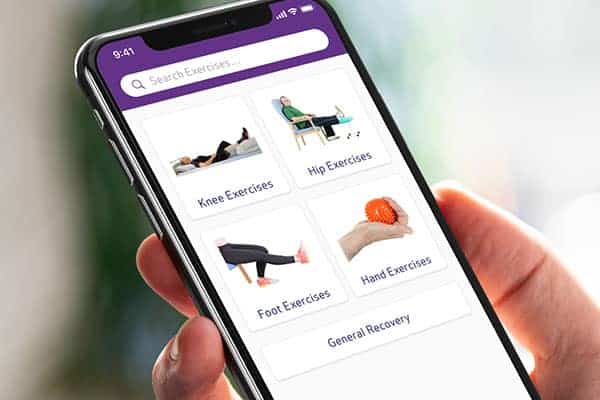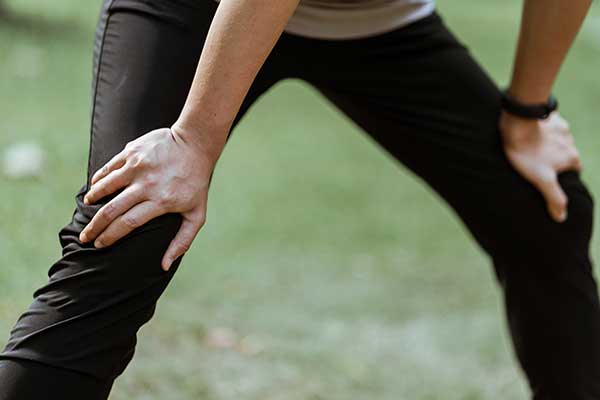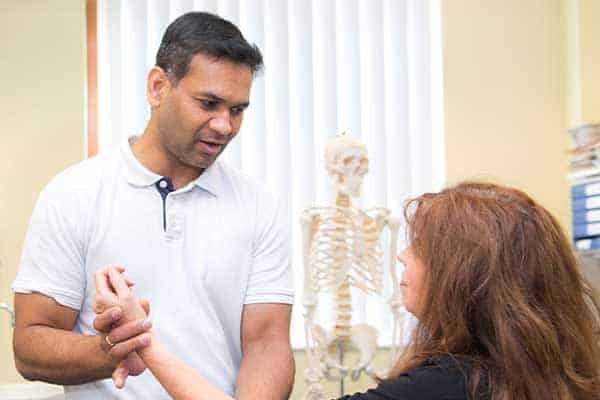There are four main ligaments in your knee joint. These strong tissues hold your bones together, allow your muscles to move them, and prevent them from moving too much.
The two collateral ligaments are situated on either side of your knee (the medial collateral ligament, or MCL, on the inside and the lateral collateral ligament, or LCL, on the outside). They control the sideways stability of the knee.
The two cruciate ligaments (the anterior cruciate ligament, or ACL, and the posterior cruciate ligament, or PCL,) form an X deep inside the knee joint. They control the backwards and forwards stability of your knee.
When any of these ligaments are stretched or twisted too far, they become sprained. This term covers a range of damage from a few torn fibres to completely split in two.
What causes knee ligament injuries?
Collateral ligament injuries happen when a force applied to one side of the knee causes excessive strain or stretch to the ligament on the opposite side.
Cruciate ligaments can put up with a lot of force, but are injured when the force becomes too great. The most common injury is to the ACL, which is prone to overstretching and twisting during sports that require sudden changes of direction.
What are the symptoms of knee ligament injuries?
Your symptoms will depend on which ligament you have injured and the severity (or ‘grade’) of the injury. Typically they will include:
- Pain and swelling of the whole knee joint (with ACL or PCL injuries).
- Localised pain and/or swelling in the area of the ligaments (MCL or LCL injuries).
- Pain and/or a feeling of instability when putting weight on your leg or with twisting movements.
It is possible to injure two or more ligaments at the same time.
How are knee ligament injuries diagnosed?
There are different grades of sprains or knee ligament injuries.
- Grade 1: The ligament has been slightly stretched, but you can still put weight on your leg.
- Grade 2: A partial tear of the ligament fibres, which might cause some loss of strength and stability.
- Grade 3: A complete tear of the ligament, leaving the knee joint unstable.
Your doctor will examine you to assess your injury. Depending on its severity, they may recommend self-management, physiotherapy or a surgical option.
What are the treatment options for knee ligament injuries?
This depends on the type and grade of the injury.
After an initial period of rest to manage the pain, reduce swelling and ease the strain on your knee joint, it may be advisable to start moving it again, as soon as possible, or to continue with a period of immobilisation (your GP may recommend using a brace).
During the first few days, protect your knee, avoid painful activity, and use an ice pack for 10-20 minutes, every 2-3 hours, to relieve pain. (Do not put ice directly next to skin as it may cause ice burn. Wrap it in a damp tea towel. Remove the pack if irritation increases. Allow the area to return to normal temperature before reapplying the ice.)
You can also compress your knee with a tubular bandage or neoprene support that covers the whole area from the top of your thigh to your ankle. This must not be worn overnight.
As often as possible, use pillows or cushions to elevate your knee above the level of your heart. This can also help to relieve pain and reduce swelling.
You could try anti-inflammatory painkillers such as Ibuprofen. Some anti-inflammatory painkillers also come as creams or gels, which you can rub over your knee area. These tend to produce fewer side effects than those taken by mouth. If you cannot take anti-inflammatory painkillers, other painkillers such as paracetamol, with or without codeine added, may be helpful. Ask your doctor or pharmacist for advice.
For most knee ligament injuries, once the pain and swelling start to improve, you should consider exercises to maintain knee function and help your muscles regain their strength. These should be light to start with and should include a combination of mobility, strength, power, speed and balance exercises.
Your doctor can offer advice on exercise and rehabilitation or refer you for physiotherapy or other manual therapies.
For certain Grade 3 injuries, surgery may be necessary.
What is the prognosis (outlook) for knee ligament injuries?
You could recover from Grade 1 injuries within weeks and from Grade 2 injuries in a month or so.
In the past, the more severe Grade 3 or multiple injuries would end a sporting career but thankfully, with modern treatments, this is usually no longer the case.
How can I prevent recurrence of knee ligament injuries?
It is important not to overdo your recovery exercises or to return to sports too early.
However, it is also unwise to avoid exercise unless advised to do so, as this can lead to further problems.
Follow the rehabilitation advice given to you by your doctor or physiotherapist.

Pocket Physio | Download now
Search for ‘Pocket Physio’ on the Apple App Store for iOS and the Google Play Store for Android to download for free.



